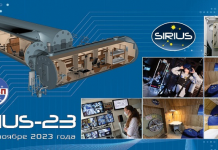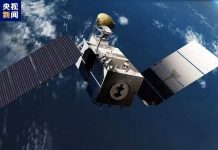Soyuz MS-17 with a crew of three people safely returned to Earth
Today at 07:55:12 Moscow time, the Soyuz MS-17 operated transport vehicle’s descent vehicle made a regular landing on the territory of Kazakhstan. As a result, three cosmonauts returned to Earth: Sergei Ryzhikov and Sergei Kud-Sverchkov from Roscosmos, and Kathleen Rubins from NASA.

The spacecraft separated from the Russian segment of the station at 04:34:04, and its propulsion system was activated for deceleration at 07:01:33, after which the descent from near-earth orbit began. Shortly thereafter, the Soyuz split into three compartments, and an international crew of three in the descent vehicle experienced overloads of about 3.8g. All operations on the descent from low-earth orbit and landing were carried out routinely, and, according to Roskosmos, the crew is feeling good.
Today, the cosmonauts Ryzhikov and Kud-Sverchkov will be delivered by a special board to the Chkalovsky airfield in the Moscow region. For several weeks, they will stay in the Complex for prelaunch preparation and post-flight rehabilitation of cosmonauts in Star City under the supervision of doctors.
By the way, the launch of the Soyuz-2.1a carrier rocket with the Soyuz MS-17 operated transport vehicle took place last year, on October 14, 2020, and after 3 hours 3 minutes, docked to the Rassvet module of the Russian segment in normal mode ISS. Thus, a record was set: for the first time globally, a human-crewed spacecraft docked to the ISS, having completed only two orbits around the Earth. Sergei Ryzhikov, Sergei Kud-Sverchkov, and Kathleen Rubins remained six months – 185 days onboard the orbital laboratory. During this time, the Russian crew members of the ISS-64 conducted 44 experiments in various fields (medicine, space biology, biotechnology, physicochemical processes, and so on). In total, the crew spent 579.5 hours on the implementation of the scientific research program.
During the 185-day expedition onboard the ISS, the crew received the Progress MS-16, Cygnus NG-15, and Dragon SpX-21 cargo ships, as well as two-handled ones: Dragon SpX Crew-1 and Soyuz MS-18. On March 19, the procedure for re-docking of the Soyuz MS-17 operated transport vehicle from the Rassvet Small Research Module (MIM-1) to the Poisk Small Research Module was carried out to enable the Soyuz MS-18 spacecraft to dock to the MIM-1. And on April 5, the crewed ship Crew Dragon Resilience was re- docked from the front airlock of the Harmony module to the upper part of the same module to make room for another Crew Dragon ship, Endeavor.
According to the Russian program, Sergei Ryzhikov and Sergei Kud-Sverchkov performed a spacewalk for 6 hours 51 minutes 8 seconds to prepare for the launch and subsequent docking of the Nauka laboratory module. Also, during the work of the ISS-64 crew, five spacewalks were performed under the American program.
The completed flight became the second in the career of cosmonaut Sergei Ryzhikov. The first time he worked in near-earth orbit was the Soyuz MS-02 manned spacecraft commander and the ISS-49/50 expedition flight engineer. For Flight Engineer 2, Kathleen Rubins, this was also not the first flight into low-earth orbit. It was launched on July 7, 2016, as flight engineer-2 of the Soyuz MS spacecraft and then made two spacewalks. In turn, for Sergei Kud-Sverchkov, his flight as a flight engineer of the Soyuz MS-17 crewed spacecraft and the ISS-64 expedition became his debut in his space career.



